You are here
Lake Issyk-Kul history.
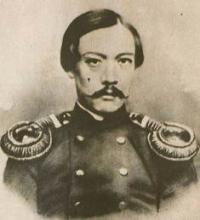
Trip from Karakol on lake Issyk-Kul.
“Nature is an infinite sphere whose center is everywhere”
Ralph Waldo Emerson.
Travel around the Lake Issyk-Kul.
It also accurately states the size of the lake. Issyk Kul was an important stage along several branches of the Silk Road and the name appears in the west on a Catalonian map in 1375, which drew heavily on Marco Polo's book published 75 years earlier.
During recent years there has been a flurry of archaeological activity. The largest town on the northern shore is Chalpon Ata. Nearby are some petroglyphs and the town has a small museum. Recent underwater exactions have revealed a number of exciting finds.
Historians have known for some time about 'sunken cities' lying beneath the waters of the lake. A little offshore is the sunken village of Chengu, 'red valley, the capital of the ancient Usun State in the second century B.C. and as the waters of the lake receded it is thought that the village will soon emerge from the depths.
Referred to by early Russian explorers to the region, diving expeditions were undertaken in 1956. The divers found several baked bricks, fragments of ceramic dishes, a piece of a ceramic pipe (which suggests a high level of local civilization), bronze arrowheads, iron knives, and the bones of both people and animals.
Offshore, opposite the villages of Korumdy and Temirovka and near the Grigoryevskaya harbor, archaeologists found fragments of ancient pots dating back to the Bronze Age. Unfortunately, only a few of such articles are preserved because most of them were taken by local residents and tourists as souvenirs.
The knife handles are topped with large figures of horses or sheep. The horses look very realistic: with the large heads, long tails, and well-developed leg muscles typical of steppe horses. One of the most interesting finds from the bottom of Issyk-Kul is a sacrificial table of almost square shape.
It has four legs shaped like a woman's body, 22 cm high. These figures are well preserved: slant eyes, wide nose, oval chin, and a short and strong neck and scholars believe they reveal the physiognomy of the ancient residents of the Issyk-Kul region.
Another find was a large hemispheric sacrificial pot with two horizontal handles and a relief tamga (the seal of the master) resembling a crescent with the points directed downwards. Such pots were widespread in this region in the second half of the first millennium and more than ten such pots have been found at Issyk-Kul, this being the largest.
It is thought that such pots were used only on holidays and special occasions. The large size of these pots testifies to big feasts of ancient cattle breeders in honor of their gods. One important archaeological find in the Issyk-Kul region was the 'Golden Man', thought to belong to the Scythian period, that is sometime between the IIIrd and VIIth centuries.
The Saks culture left many burial mounds on the Kazakh steppes, and one of the most valuable mounds was discovered on the shore of Issyk-Kul, measuring some sixty meters in diameter and six meters in height. It was surrounded by several false mounds to confuse potential grave robbers.
The mound consisted of two burial niches, one in the center and another on the side. Despite all the subterfuge used by the ancients who constructed the mound, the central tomb was looted by thieves, and we will never know what treasures it once contained, but the tombs located 15 m to the south of the center remained untouched, and contained the grave of the 'Golden Man'.
The grave also contained 4,000 golden decorations, various plates and figures of animals. The most valuable find were the clothes. The warrior wore a red suede jacket decorated with red plates and a high leather cap decorated with figures of birds and animals.
On his side he had a dagger both sides of the blade depicting twenty-one sacred animals, including a wolf, a mountain goat, an antelope, a snake, and a snow leopard. The face of the warrior was covered with black velvet without eyes, mouth, nose and teeth.
The 'Golden Man' was not tall, coming up to shoulder height of modern man. Because the body is so small, French archaeologists have suggested that this is the body of the famous Massagete queen, Tomiris, who defeated and killed the great Persian King, Cyrus.
According to the Roman historian Herodotus, the battle was fierce; the two armies stood face to face, and poured a rain of arrows on each other. When there were no more arrows, they started to fight with spears and swords.
Almost the entire Persian army died in the battle, and Cyrus was killed as well. Tomiris ordered his head be forced into a bag full of blood and said, "Now be sated with the blood you have always thirsted for". It is very difficult, however, to test the skeleton since it is so badly preserved.
Scholars cannot even determine the sex of the body. However, its high cap and neck decorations were symbols of clerical and religious power. So he or she was either a ruler or a priest. At the extreme Eastern end is the town of Tup.
When the renowned Russian explorer Semyenov (Tianshansky') first visited the region, he found near here at the San Tash pass a large barrow of smooth stones. Legend has it that it was constructed by the army of Timur.
They found their way into the basin and he gave an order that every soldier was to pick up a stone from the shore of the lake and take it to the pass ... when the campaign was over they would return it to the shore.
Very few of the soldiers survived and so the army effectively constructed its own memorial. One find that has so far eluded archaeologists is the grave of Genghiz Khan. There is a legend that he decreed that when he died his burial place should be kept a secret.
So a party of forty attendants took his body to a secret location, buried him (along with a treasure of untold riches), and were then killed by their forty guards, who in turn committed suicide thus ensuring the Khan's wishes were fulfilled.
The site has never been found,and many Kyrgyz believe that it was somewhere around Lake Issyk Kul. The theory was taken seriously enough for the Soviet government to stage an expedition to search for the grave in the 1970s.
There has, however, been much interest in a recent discovery of a mass grave in Mongolia, that some archaeologists think might be it which will come as a surprise and disappointment to the Kyrgyz 'believers', if it can be proved.
Kyrgyzstan is sometimes known as the Switzerland of Central Asia. Tianshansky Semyenov may have been the first to make the comparison; he wrote about lake Issyk Kul: "The dark, blue surface of Issyk-Kul is as blue as the surface of Lake Geneva, but the vast size of Issyk-Kul makes it grandiose, which can not be said of Lake Geneva.
The Issyk-Kul water beautifully reflects the snow-covered Tien Shan peaks against the background of the dark blue, bright, cloudless Central Asian sky." During the Soviet period the lake was used by the Navy to test torpedoes built in Tashkent and there are still jokes about the Kyrgyz Navy.
There are a large number of hotels, sanatoria, guesthouses and homestays at various points around the lake, many of which can make arrangements for services to the neighboring mountains. Some of the sanatoria have hydrothermal springs and offer mud baths.
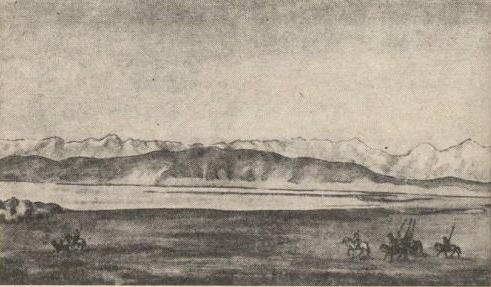
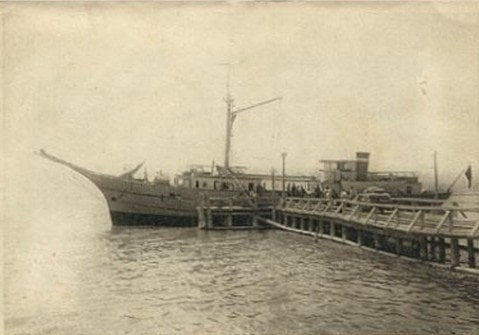
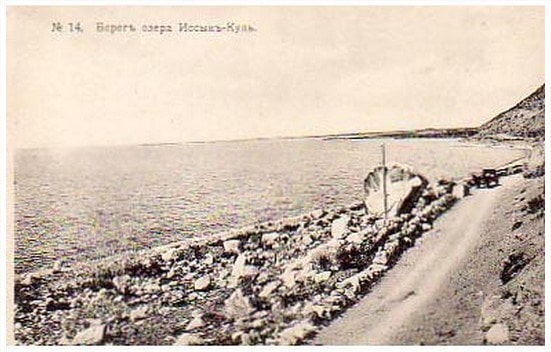
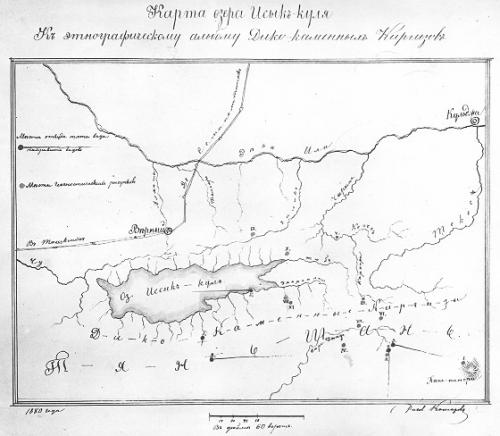
Authority:
http://www.discovery-central-asia.com/archive/2006/spr14.php







